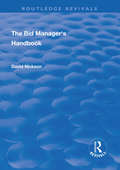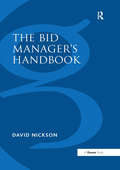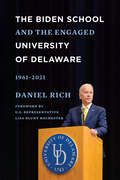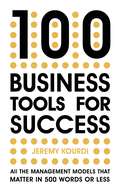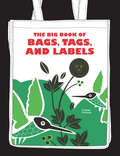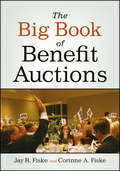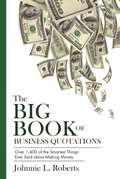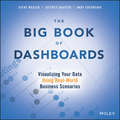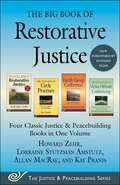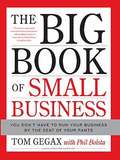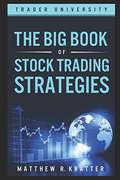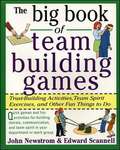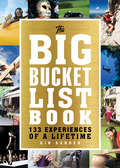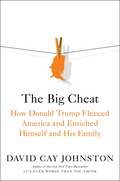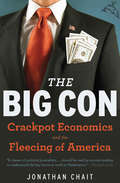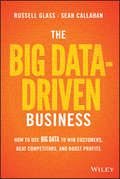- Table View
- List View
The Bid Manager's Handbook
by David NicksonThis title was first published in 2003. Winning significant business on the right terms is an increasingly complex, challenging and time-consuming task, and a successful bid is a vital part of any business offering its services or products to another. This book aims to help you to enhance the probability of success in winning bids at the desired margins and to set-up and run effectively a bid management team. Aimed at two main groups of readers (sales staff managing multi-disciplinary bid teams and project and technical managers who find themselves managing a bid to support a sales campaign) it's a resource for the battle to win new business. Taking an extremely practical approach and using real life examples David Nickson leads the reader through every stage of planning for, producing and delivering a bid: knowing what needs to be done; knowing how to present the information to the prospective client effectively; gaining the writing and editorial skills needed to put a sales case across; identifying the skills that are needed to manage a bid. It also shows how to save time - the most important commodity in any bid as it is always a scarce resource - without affecting quality.
The Bid Manager’s Handbook
by David NicksonThe original Bid Manager's Handbook continues to provide an invaluable resource in the battle to win new business. Winning significant business on the right terms is an increasingly complex, challenging and time-consuming task, and a successful bid is a vital part of any business offering its services or products to another. This book will help you to enhance the probability of success in winning bids at the desired margins and to set up and run effectively a bid management team. The Handbook is aimed at sales staff managing multi-disciplinary bid teams, and project and technical managers who find themselves managing a bid to support a sales campaign. Taking a practical approach and using real-life examples, David Nickson leads the reader through every stage of planning for, producing and delivering a bid. Crucially it also shows how to save time - the most important commodity in any bid - without affecting quality. Now the original Bid Manager's Handbook has been repackaged to include additional material that expands on the writing and editorial side of the bid, the use of bid management software and the bid review process.
The Biden School and the Engaged University of Delaware, 1961-2021
by Daniel RichThis book reviews the history of the Joseph R. Biden, Jr. School of Public Policy and Administration from 1961 to 2021. The focus is on the school’s accomplishments over its first sixty years, how they were achieved, and why they are significant. The analysis describes the challenges and opportunities that shaped the school’s development and its emergence as one of the nation’s leading public affairs schools. What began in 1961 as an experimental program supported by a single external grant emerged six decades later as one of the nation’s leading comprehensive schools of public affairs. That transformation unfolded during one of the most dynamic periods in the history of higher education when the public purpose of universities was expanded. The history of the Biden School is a story of institutional innovation, perseverance, adaptation, and resilience.
The Big 100: The 100 Business Tools You Need To Succeed
by Jeremy KourdiThe world is full of business ideas. But how do you know which the best ones are? And how do you find time to read them? THE BIG 100 may be a little book, but it contains the very best business tools that have come from the very best business brains on the planet. Each is summarized over just two pages, so that you can quickly gain access to the insights which are driving the most successful people in all walks of life.
The Big Bing: Black Holes of Time Management, Gaseous Executive Bodies, Exploding Careers, and Other Theories on the Origins of the Business Universe
by Stanley BingFor twenty years, Stanley Bing has offered insight, wisdom, and advice. In one essential volume, here is all you need to know to master your career, your life, and, when necessary, other weaker life forms
The Big Book of Bags, Tags, and Labels
by Cristian CamposBag, tag, and label design is critical in the world of marketing and sales, yet can be challenging to execute successfully. The Big Book of Bags, Tags and Labels is a unique visual collection featuring work from top companies around the globe. It offers hundreds of ideas, pages of inspiration, and loads of professional advice from designers on styles ranging from classic to modern, sophisticated to conceptual, with a consistent focus on name recognition and branding.
The Big Book of Benefit Auctions
by Jay R. Fiske Corinne A. FiskeThe Big Book of Benefit Auctions is the ultimate step-by-step handbook on how to plan and have a successful and effective auction. Auction committees will find it an invaluable reference as it provides all the tools they will need for complete auction planning and management. From setting the goal for the event, to organizing the committee, procuring auction items, building the audience, preparing the catalog and through auction night cashiering (check out) services, everything you will want to know about the auction process is readily at your fingertips in this resource guide. The book will not only contain important "how to" information, it will also explain why some decisions and activities are not only good practices, they are essential to having a well-run and efficient event. Also, the book will discuss important strategies for maximizing revenue at your event, and will cover common pitfalls and how to avoid them.
The Big Book of Business Quotations: Over 1,400 of the Smartest Things Ever Said about Making Money
by Johnnie L. RobertsA quotable reference for anyone interested in learning the ins and outs of business or starting their own.More than one million people in the United States take the necessary steps to enroll in master's of business programs every single year. These students learn the fundamentals required to eventually start their own businesses, carry on family businesses, or become CEOs of other people's businesses.The Big Book of Business Quotations, compiled and edited by journalist Johnnie Roberts, features advice, ideas, strategies, and secrets that helped make some of the most successful businesspeople in the world rich, famous, or both. These quotes will inspire and motivate any current or aspiring businessperson to achieve success."Leadership is a potent combination of strategy and character. But if you must be without one, be without the strategy." -Norman Schwarzkopf"Business opportunities are like buses; there's always another one coming." -Richard Branson"You only have to do a very few things right in your life so long as you don't do too many things wrong." -Warren Buffett"Success is often achieved by those who don't know that failure is inevitable." -Coco Chanel
The Big Book of Dashboards: Visualizing Your Data Using Real-world Business Scenarios
by Andy Cotgreave Jeffrey Shaffer Steve WexlerThe definitive reference book with real-world solutions you won't find anywhere else The Big Book of Dashboards presents a comprehensive reference for those tasked with building or overseeing the development of business dashboards. Comprising dozens of examples that address different industries and departments (healthcare, transportation, finance, human resources, marketing, customer service, sports, etc.) and different platforms (print, desktop, tablet, smartphone, and conference room display) The Big Book of Dashboards is the only book that matches great dashboards with real-world business scenarios. By organizing the book based on these scenarios and offering practical and effective visualization examples, The Big Book of Dashboards will be the trusted resource that you open when you need to build an effective business dashboard. In addition to the scenarios there's an entire section of the book that is devoted to addressing many practical and psychological factors you will encounter in your work. It's great to have theory and evidenced-based research at your disposal, but what will you do when somebody asks you to make your dashboard 'cooler' by adding packed bubbles and donut charts? The expert authors have a combined 30-plus years of hands-on experience helping people in hundreds of organizations build effective visualizations. They have fought many 'best practices' battles and having endured bring an uncommon empathy to help you, the reader of this book, survive and thrive in the data visualization world. A well-designed dashboard can point out risks, opportunities, and more; but common challenges and misconceptions can make your dashboard useless at best, and misleading at worst. The Big Book of Dashboards gives you the tools, guidance, and models you need to produce great dashboards that inform, enlighten, and engage.
The Big Book of Job-Hunting Hacks: How to Build a Résumé, Conquer the Interview, and Land Your Dream Job
by Editors of the American Library Association John Henry Weiss Brenda BernsteinA helpful compendium of tips and tricks to land the perfect job! In The Big Book of Job-Hunting Hacks, experienced job-hunting professionals offer detailed advice on every step of the job-hunting process. From how to navigate the interview process, to how to create the perfect resume, this book will help you stand out from your competitors. With a new introduction by John Henry Weiss, president of a recruitment firm, that contextualizes the current economic state as a result of COVID-19, this book offers hundreds of practical tips for those laid-off, fired, or new to enter the workplace. Some of the information that this book will explain: Which questions you should be asking yourself while researching the marketHow to craft an effective cover letterThe importance of a simple resume formatHow to negotiate a job offerHow to build your own businessAnd so much more! Whether you're entry-level or nearing the peak of your career, The Big Book of Job-Hunting Hacks is the book for you!
The Big Book of Restorative Justice: Four Classic Justice & Peacebuilding Books in One Volume (Justice and Peacebuilding)
by Howard Zehr Kay Pranis Lorraine Stutzman Amstutz Allan MacRaeThe four most popular restorative justice books in the Justice & Peacebuilding series—The Little Book of Restorative Justice: Revised and Updated, The Little Book of Victim Offender Conferencing, The Little Book of Family Group Conferences, and The Little Book of Circle Processes—in one affordable volume. And now with a new foreword from Howard Zehr, one of the founders of restorative justice!Restorative justice, with its emphasis on identifying the justice needs of everyone involved in a crime, is a worldwide movement of growing influence that is helping victims and communities heal while holding criminals accountable for their actions. This is not a soft-on-crime, feel-good philosophy, but rather a concrete effort to bring justice and healing to everyone involved in a crime. Circle processes draw from the Native American tradition of gathering in a circle to solve problems as a community. Peacemaking circles are used in neighborhoods, in schools, in the workplace, and in social services to support victims of all kinds, resolve behavior problems, and create positive climates.Each book is written by a scholar at the forefront of these movements, making this important reading for classrooms, community leaders, and anyone involved with conflict resolution.
The Big Book of Small Business
by Phil Bolsta Tom GegaxYour shoes are charred from stomping out brush fires. You have nightmares about UFOs-Unreachable Financial Objectives. All-star interviewees turn into duds. Meetings cause more problems than they solve. The office is a ghost town at 5:01 p.m. Does this sound familiar? Tom Gegax knows what that is like. Years after running his Tires Plus franchise by the seat of his pants, blissfully unaware of how little he knew about getting the most out of people and managing a world-class organization, Tom was faced with a cancer diagnosis and a business at the brink of disaster. Resolved to change things around, he improved his mental clarity, health, and relationships and noticed that the more he profited on a personal level, the more his company profited. Tires Plus grew into a $200 million business with 150 upscale locations. He had learned the first lesson in Enlightened Leadership 101: Focus on the well-being of your employees and customers-as well as your own-and success will follow naturally. In The Big Book of Small Business, Tom shares his hard-earned lessons on how to become an enlightened, effective leader, and on how to do the small things right so the big decisions work. This all-in-one toolbox for small businesses is jammed with warm-hearted, tough-minded practices and street-smart tips, covering every aspect of a growing business: Starting, funding, and getting your new business off the ground Crafting a mission and growing a corporate culture that works Hiring the best people and maximizing their potential Communicating and negotiating with your employees, customers, and suppliers Creating processes for continuous innovation and growth Protecting your business from unforeseen dangers Planning for growth And much more . . . As thorough as a textbook and as lively as a news magazine, The Big Book of Small Business is the most comprehensive and practical book on how to take a small business to the next level, and an indispensable slingshot for the millions of scrappy Davids taking on corporate Goliaths.
The Big Book of Stock Trading Strategies
by Matthew R. KratterLearn a powerful trading strategy in just 15 minutes. Then use it to make money for the rest of your life.
The Big Book of Team Building Games: Trust-Building Activities, Team Spirit Exercises, and Other Fun Things to Do
by John Newstrom Edward ScannellDid you know that games can be a terrifically effective way to build team spirit, communication, and trust among people who work together day in and day out? Now you can spark morale in any work group by choosing from 70 stimulating games and activities specifically designed for the manager who's looking to raise sagging morale in a department, liven up boring staff meetings, enable team members to collaborate smoothly and effectively, and much more!
The Big Book of Words That Sell: 1200 Words and Phrases That Every Salesperson and Marketer Should Know and Use
by Robert W. BlyThe language you need to sell and succeed, from America’s top copywriter.Robert W. Bly is a self-made multi-millionaire and brings in six figures of sales annually from marketing and selling his own products, not to mention more than half a million from his freelance writing. He’s been a professional copywriter for nearly forty years and has been named America’s best copywriter. And now he’s drawing back the curtain and revealing hundreds of proven words and phrases that can help you:Grab the reader’s attention.Convey a sense of urgency.Communicate what’s special, different, and unique about your product.Boost response with proven time-tested offers.Arouse the reader’s curiosity.Overcome buyer objections.Announce something new.Move the reader emotionally.Create a perception of superior product value.Give the reader news.And much more.The Big Book of Words that Sell contains the 1200 words and phrases that have proven to sell most effectively for Bob, and the best situations to employ that language in. Use them to:Sell any product or service.Get connections, followers, and friends on social media.Write social media posts and ads that generate more clicks and conversions.Optimize web pages for Google and other search engines.Write e-mails that get higher open and click-through rates.Become a more powerful and persuasive copywriter.Increase web site traffic and conversion.Generate better return from your Call to Actions (CTA).The Big Book of Words that Sell: 1200 Words and Phrases That Every Salesperson and Marketer Should Know and Use is your guide to the world’s most persuasive words and phrases—and how to leverage them to sell your product.
The Big Buck Adventure
by Shelley Gill Grace Lin Deborah TobolaOne little girl and one very big dollar set out on a great adventure at the store. <P><P> However, what seems like a pleasant afternoon of shopping soon turns perplexing as the challenge of her buying options becomes overwhelming. She doesn't know what to do. There are so many choices, but she only has one buck. A fun and perfect example of how we use math in our daily lives.
The Big Bucket List Book
by Gin SanderEveryone has a daunting "bucket list" of things to complete before they die. The problem? We spend too much time creating lists of what we want to achieve instead of just doing it. The Big Bucket List Book will transform the way you look at the world and the power you have to achieve your dreams. In this charming and practical collection, Gin Sander offers over 130 fresh ideas for infusing your life with a bit of glamor, adventure, and style for every budget and adventure level, including: Staying in a castle to channel your inner romantic (did we mention you could do it for free?) Joining a bike race in Tuscany or giving back with a humanitarian mission in Africa Taking a songwriting class as the next Joni Mitchell or Jack White Eating pie (need we say more?) It's time to stop listing, and start living! With this book in hand, you can make your next chapter the most enriching and personally fulfilling of them all...and maybe change the world while you're at it.
The Big Bucks
by Thomas NelsonEvery year approximately 460,000 people under the age of 35 years old declare bankruptcy. In the last decade, loan debt has risen 142% for college students.1 The Big Bucks will explain in clear, conversational language the basics of money management-from credit cards to checking accounts to leases on cars. This is the info students need to know as they head off to college. It's the perfect graduation gift for any student in your church or school!
The Big Chair: The Smooth Hops and Bad Bounces from the Inside World of the Acclaimed Los Angeles Dodgers General Manager
by Ned Colletti Joseph A. Reaves“An important contribution to 21st-century baseball literature. . . Mr. Colletti’s book might be even more groundbreaking [than Moneyball] in some ways: It’s a nearly unprecedented opportunity to see what running a baseball franchise looks like through the eyeballs of an actual general manager. . . [Colletti] has a gift for entertaining storytelling. . . These are stories modern general managers rarely tell, except in late-night gatherings at their favorite bars with people they know and trust. So to read them here, told in such colorful detail, makes you feel as if Ned Colletti has just invited you to plop down on the next bar stool.” --Wall Street Journal “Ned Colletti is a baseball treasure with fascinating stories to tell from inside the game. The Big Chair is your all-access pass. After reading this book, you will not only understand the job of a general manager better but also the game of baseball itself.”—Tom Verducci, author of The Cubs Way and co-author of The Yankee YearsAn unprecedented, behind-the-scenes look at the career of famed former Los Angeles Dodgers General Manager (a position also known as “The Big Chair”), whose tenure spanned nine of the most exciting and turbulent years in the franchise’s history. During his tenure with the Dodgers, Colletti had the highest winning percentage of any general manager in the National League. In The Big Chair, he lets readers in on the real GM experience from his unique vantage point—sharing the inner workings of three of the top franchises in the sport, revealing the out-of-the-headlines machinations behind the trades, the hires and the deals; how the money really works; how the decision-making really works; how much power the players really have and why—the real brass tacks of some of the most pivotal decisions made in baseball history that led to great success along with heartbreak and failure on the field. Baseball fans will come for the grit and insight, stay for the heart, and pass it on for the wisdom. Ned Colletti began his MLB career with his beloved hometown team, the Chicago Cubs, more than 35 years ago. He worked in Chicago for a dozen years and was in the front office when the Cubs won the National League East in 1984 and 1989, after which he moved on as director of baseball operations for the SF Giants. By 1996, he became the Assistant GM for the Giants, before being hired as the GM in Los Angeles in 2006. There he oversaw the Dodgers through the highly publicized and acrimonious divorce battle between Frank and Jamie McCourt that culminated in the equally highly publicized sale of the team. He was present at the press conference where Don Mattingly, having just watched his team eliminated from the playoffs, used the post-season conference to vehemently discuss his lack of a contract extension. He brought marquee names like Greg Maddux and Clayton Kershaw to LA, as well as marquee drama with the likes of Manny Ramirez and Yasiel Puig; hired future Hall of Famer Joe Torre as manager; and oversaw fourteen Dodgers playoff wins. And these are just a few of the highlights. Colletti serves up a huge dish of first-hand experiences with some of the biggest names in baseball history (Barry Bonds, Greg Maddux, Don Mattingly, Don Zimmer, Tommy Lasorda, Scott Boras, Vin Scully, and more). From his humble early years living in a Chicago garage to his path to one of the most prestigious positions in professional sports, his very public and illustrious career has left a permanent handprint in the history of America's sport—and now he's ready to share the insight only those who have sat in The Big Chair have ever seen.
The Big Cheat: How Donald Trump Fleeced America and Enriched Himself and His Family
by David Cay JohnstonPulitzer Prize–winning reporter and dean of Trumpologists David Cay Johnston reveals years of eye-popping financial misdeeds by Donald Trump and his family.While the world watched Donald Trump&’s presidency in horror or delight, few noticed that his lifelong grifting quietly continued. Less than forty minutes after taking the oath of office, Trump began turning the White House into a money machine for himself, his family, and his courtiers. More than $1.7 billion flowed into Donald Trump&’s bank accounts during his four years as president. Foreign governments rented out whole floors of his hotel five blocks from the White House while lobbyists conducted business in the hotel&’s restaurants. Payday lenders and other trade groups moved their annual conventions to Trump golf resorts. And individual favor seekers joined his private Mar-a-Lago club with its $200,000 admission fee in hopes of getting a few minutes with the President. Despite earning more than $1 million every day he was in office, Trump left the White House as he arrived—hard up for cash. More than $400 million in debt comes due by 2024, and Trump still lacks the resources to pay it back. The Big Cheat takes you on a guided tour of how money flowed in and out of Trump&’s hundreds of enterprises, showing in simple terms how his family and courtiers used his presidency to enrich themselves, even putting national security at risk. Johnston details the four most recent years of the corruption that has defined the Trump family since 1885 and reveals the costs of Trump&’s extravagant lifestyle for American taxpayers.
The Big Con: Crackpot Economics and the Fleecing of America
by Jonathan ChaitThe scam of supply-side economics is clearly and convincingly explained in &“a classic of political journalism&” (Michael Lewis). Jonathan Chait has written for a range of publications, from the Wall Street Journal to the Washington Post, and considers himself a moderate. But he&’s convinced that American politics has been hijacked. Over the past three decades, a fringe group of economic hucksters has corrupted and perverted our nation&’s policies, Chait argues, revealing in The Big Con how these canny zealots first took over the Republican Party, and then gamed the political system and the media so that once-unthinkable policies—without a shred of academic, expert, or even popular support—now drive the political agenda, regardless of which party is in power. The principle is supposedly &“small government&”—but as he demonstrates, the government is no smaller than it was in the days of Ronald Reagan; it&’s simply more debt-ridden and beholden to wealthy elites. Why have these ideas succeeded in Washington even as the majority of the country recognizes them for the nonsense they are? How did a clique of extremists gain control of American economic policy and sell short the country&’s future? And why do their outlandish ideas still determine policy despite repeated electoral setbacks? Explaining just how things work in Washington, DC, and distinguishing between short-term volatility in the &“political weather&” and the long-term, radical shift in the &“political climate,&” Chait presents a riveting drama of greed and deceit that should be read by every concerned citizen. &“Chait is both very serious and seriously funny as he traces the rise of conservatism over the past thirty years.&” —Michael Kinsley
The Big Con: How the Consulting Industry Weakens Our Businesses, Infantilizes Our Governments, and Warps Our Economies
by Mariana Mazzucato Rosie CollingtonA vital and timely investigation into the opaque and powerful consulting industry—and what to do about itThere is an entrenched relationship between the consulting industry and the way business and government are managed today that must change. Mariana Mazzucato and Rosie Collington show that our economies&’ reliance on companies such as McKinsey & Company, Boston Consulting Group, Bain & Company, PwC, Deloitte, KPMG, and EY stunts innovation, obfuscates corporate and political accountability, and impedes our collective mission of halting climate breakdown.The &“Big Con&” describes the confidence trick the consulting industry performs in contracts with hollowed-out and risk-averse governments and shareholder value-maximizing firms. It grew from the 1980s and 1990s in the wake of reforms by the neoliberal right and Third Way progressives, and it thrives on the ills of modern capitalism, from financialization and privatization to the climate crisis. It is possible because of the unique power that big consultancies wield through extensive contracts and networks—as advisors, legitimators, and outsourcers—and the illusion that they are objective sources of expertise and capacity. In the end, the Big Con weakens our businesses, infantilizes our governments, and warps our economies.In The Big Con, Mazzucato and Collington throw back the curtain on the consulting industry. They dive deep into important case studies of consultants taking the reins with disastrous results, such as the debacle of the roll out of HealthCare.gov and the tragic failures of governments to respond adequately to the COVID-19 pandemic. The result is an important and exhilarating intellectual journey into the modern economy&’s beating heart. With peerless scholarship, and a wealth of original research, Mazzucato and Collington argue brilliantly for building a new system in which public and private sectors work innovatively for the common good.
The Big Data-Driven Business
by Sean Callahan Russell GlassGet the expert perspective and practical advice on big dataThe Big Data-Driven Business: How to Use Big Data to Win Customers, Beat Competitors, and Boost Profits makes the case that big data is for real, and more than just big hype. The book uses real-life examples--from Nate Silver to Copernicus, and Apple to Blackberry--to demonstrate how the winners of the future will use big data to seek the truth. Written by a marketing journalist and the CEO of a multi-million-dollar B2B marketing platform that reaches more than 90% of the U.S. business population, this book is a comprehensive and accessible guide on how to win customers, beat competitors, and boost the bottom line with big data.The marketplace has entered an era where the customer holds all the cards. With unprecedented choice in both the consumer world and the B2B world, it's imperative that businesses gain a greater understanding of their customers and prospects. Big data is the key to this insight, because it provides a comprehensive view of a company's customers--who they are, and who they may be tomorrow. The Big Data-Driven Business is a complete guide to the future of business as seen through the lens of big data, with expert advice on real-world applications.Learn what big data is, and how it will transform the enterpriseExplore why major corporations are betting their companies on marketing technologyRead case studies of big data winners and losersDiscover how to change privacy and security, and remodel marketingBetter information allows for better decisions, better targeting, and better reach. Big data has become an indispensable tool for the most effective marketers in the business, and it's becoming less of a competitive advantage and more like an industry standard. Remaining relevant as the marketplace evolves requires a full understanding and application of big data, and The Big Data-Driven Business provides the practical guidance businesses need.
The Big Ditch: How America Took, Built, Ran, and Ultimately Gave Away the Panama Canal
by Noel Maurer Carlos YuAn incisive economic and political history of the Panama CanalOn August 15, 1914, the Panama Canal officially opened for business, forever changing the face of global trade and military power, as well as the role of the United States on the world stage. The Canal's creation is often seen as an example of U.S. triumphalism, but Noel Maurer and Carlos Yu reveal a more complex story. Examining the Canal's influence on Panama, the United States, and the world, The Big Ditch deftly chronicles the economic and political history of the Canal, from Spain's earliest proposals in 1529 through the final handover of the Canal to Panama on December 31, 1999, to the present day.The authors show that the Canal produced great economic dividends for the first quarter-century following its opening, despite massive cost overruns and delays. Relying on geographical advantage and military might, the United States captured most of these benefits. By the 1970s, however, when the Carter administration negotiated the eventual turnover of the Canal back to Panama, the strategic and economic value of the Canal had disappeared. And yet, contrary to skeptics who believed it was impossible for a fledgling nation plagued by corruption to manage the Canal, when the Panamanians finally had control, they switched the Canal from a public utility to a for-profit corporation, ultimately running it better than their northern patrons.A remarkable tale, The Big Ditch offers vital lessons about the impact of large-scale infrastructure projects, American overseas interventions on institutional development, and the ability of governments to run companies effectively.
